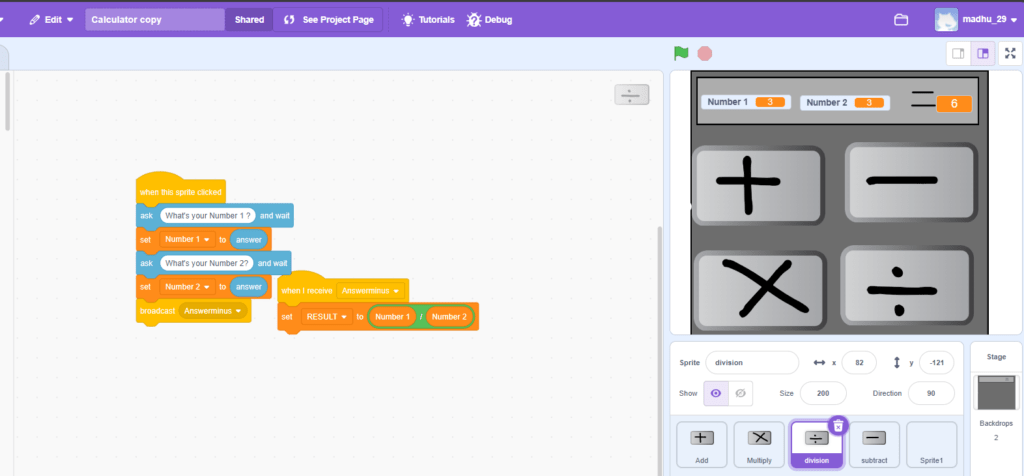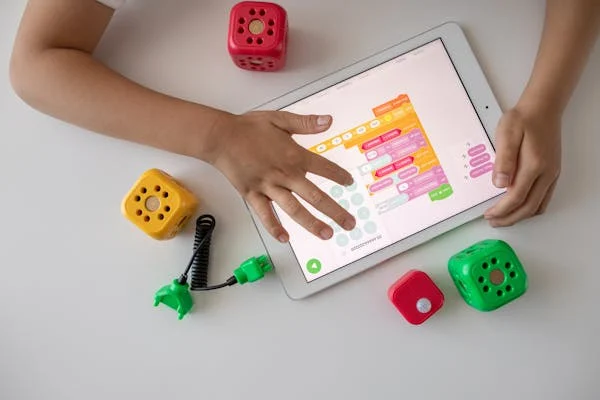Creating a Calculator Using Scratch Programming
Scratch programming is a fun and interactive way to introduce young minds to the world of coding. Designed by MIT, Scratch simplifies programming with its block-based interface, allowing users to build projects without diving into complex syntax. Today, we will explore how to create a simple calculator in Scratch that performs basic arithmetic operations such as addition, subtraction, multiplication, and division. Let’s dive into this step-by-step guide!
Why Build a Calculator in Scratch?
Before we begin, let’s understand why building a calculator is a great project. Calculators are familiar tools that everyone uses in daily life. By building one, you not only enhance your logical thinking but also understand the practical applications of coding. Moreover, this project is beginner-friendly and provides a solid foundation for exploring more advanced Scratch projects.
Step 1: Setting Up Your Scratch Project
To start, open Scratch and create a new project. Here, you will use the “Ask” blocks to take inputs from the user and the “Broadcast” and “When I Receive” blocks to handle calculations.
Step 2: Creating Variables
You’ll need the following variables:
- number 1: To store the first number entered by the user.
- number 2: To store the second number entered by the user.
- result: To store the outcome of the calculation.
To create these variables:
- Go to the Variables section.
- Click on Make a Variable.
- Create the variables num1, num2, and result one by one.
Step 3: Coding the Calculator
Now, let’s write the code step by step.
1. Ask for Inputs
Use the “Ask” block to take input from the user. Here’s how:
ask "Enter number 1: "
set [num1 v] to (answer)
ask "Enter number 2: "
set [num2 v] to (answer)
These blocks will prompt the user to enter two numbers, which will be stored in the variables num1 and num2.
2. Broadcast Operations
After taking the inputs, broadcast a message to perform the desired operation. To broadcast something you get a secret message and whenever you receive the secret message/code it will proceed with the remaining code.
3. Perform Addition
Add the following code under “When I receive answer”:

This will calculate the sum of num1 and num2 and display the result on the screen.

4. Extend for Subtraction, Multiplication, and Division
You can repeat the same steps for subtraction, multiplication, and division. Just replace the operation in the “set [result v] to” block:
- For subtraction:
((num1) - (num2))

- For multiplication:
((num1) * (num2))

- For division:
((num1) / (num2))

Step 4: Adding a User-Friendly Interface
Scratch allows you to customize the look of your project. Here are some ways to make your calculator visually appealing:
- Add a Sprite: Choose a character (sprite) that will guide the user through the process. For example, a talking cat can prompt the user to enter numbers and display results.
2. Design a Backdrop: Create a background that resembles a calculator screen using Scratch’s paint editor.
Step 5: Testing Your Calculator
Once the coding is complete, it’s time to test your calculator. Run the program and:
- Enter two numbers when prompted.
- Verify the results for each operation (addition, subtraction, multiplication, and division).
If everything works correctly, congratulations! You’ve successfully built a calculator in Scratch.
Enhancements and Challenges
If you’d like to take this project a step further, here are some ideas:
Building a calculator in Scratch is an excellent way to learn coding fundamentals while having fun. It encourages logical thinking and problem-solving—skills that are essential for any programmer. Whether you’re a student, teacher, or coding enthusiast, this project is sure to leave you with a sense of accomplishment.
So, what are you waiting for? Open Scratch, follow these steps, and start building your very own calculator today! Happy coding!
-
Sale
Voting poll app with MIT app Inventor Presentation
$0Compare to $5 -
 Sale
SaleFree Interactive Classroom Presentation for Kids for Grade 1 Math
$0Compare to $5 -
 Sale
SaleCreate a To-Do List App in MIT App Inventor: A Step-by-Step Guide Presentation
$0Compare to $5 -
 Sale
SaleFree Conditional Statements in Python Worksheets
$0Compare to $5 -
 Sale
SaleFree Python Worksheets | Variables in Python
$0Compare to $5 -
 Sale
SaleIntroduction to Scratch Programming Language for Kids | Lesson 1 Resources
$0Compare to $5.50
Elementary Concepts of Objects and Classes in Java Programming
Elementary Concepts of Objects and Classes in Java Programming Java, known for its versatility and w…
10 simple ways to Create a easy Virtual Pet Game in Scratch Programming
Creating a Virtual Pet Game in Scratch Programming: A Step-by-Step Guide
Crazy Scratch Project on Sprite Dance Party
Scratch Programing Project on Sprite Dance Party Scratch: The Basics Welcome to the second chapter o…
How to Create a Catch an item Game using Scratch Programming
Hey there, fellow coders! Ready to dive into the awesome world of Scratch? This visual programming l…
Top Coding Quiz!
Test your knowledge with Coding Scratch Quizzes! Improve your Scratch coding abilities through inter…
What is Sound block in Scratch programming?
Hey there, young coder !Are you ready to make your Scratch projects come to life with sound? Whether…
CBSE Math Course for Grade 1-8 – Live 1 on 1 session
Master mathematics with our CBSE-aligned Math Course designed for students in Grades 1-8. This cours…
CBSE 12th Computer Science Revision Course
Join us for an exclusive online revision session, where we’ll predict the most expected questi…
Java programming for ICSE 10th
Key Features Comprehensive Syllabus Coverage Interactive Learning Exam-Oriented Approach Beginner-Fr…
App Development for Kids
Empowering Young Minds: MIT App Inventor for Kids This comprehensive 16-hour course introduces kids …
Scratch Programming Course for Complete Beginners
Start Your Scratch Programming Journey Today for FREE! Unlock your creativity and coding potential w…









